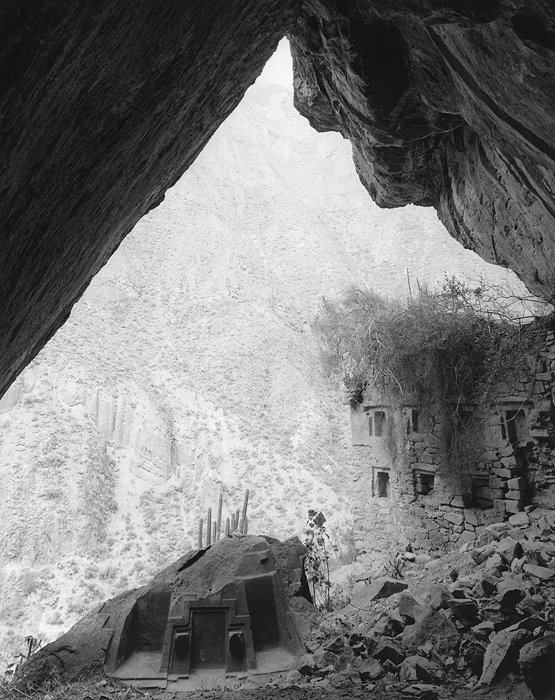Edward Ranney
Edward Ranney has photographed the natural and man-altered landscape for over forty years, specializing during that period in recording important aspects of pre- Columbian archaeological sites of Peru.The photographs posted here are those recently published in ARCHAEOLOGY and the shape of time, the majority of which were originally reproduced in Stonework of the Maya, 1974, Monuments of the Incas, 1982 & 2010, Prairie Passage, 1998, and Down Country, 2010. An ongoing, unpublished project, The Andean Desert Survey, begun in 1985, focuses on pre-Columbian archaeological sites along the coastal deserts of Peru and Chile.
In an essay entitled “The Character of the Place”, Peter C Bunnell, Faculty Curator of Photography Emeritus, Princeton University, wrote on the occasion of Ranney's mid- career exhibition at The Princeton University Art Museum, “The one hundred photographs in the Elliott collection (in The Princeton University Art Museum) amply reveal the faith that Edward Ranney has in his medium. They also reflect his realization that surfaces can reveal inner states, that through the careful presentation of facts, spirit may be revealed, and that with dedication and respect, the character of a place may be shown in its essence. Throughout the years of his photographing, Ranney has pursued the same goal: to position his imagery in a cultural unity as part of a collective meaning he calls “a photographic view of the world”. In so doing he has earned a reputation for insight and discernment. To be in his company, or to study one of his books, is to confront the serious interchange between intellectual knowledge and the poetics of feeling.”
Edward Ranney Photographs, The John B Elliott Collection, Princeton University Art Museum, 2003, republished in Inside the Photograph: Writings on Twentieth Century Photography, Peter C Bunnell, Aperture, 2006.
“Edward Ranney is best known for his photographs of pre-Columbian architecture. He approaches the subject as we suppose the Inca must have approached the designing of many of their buildings, as a sculptor working in and with natural light to reveal form. By his identification with the early artists he helps us to discover a worldview that was and is reverent and encompassing. He notes, for instance, masonry in which everything fits massively to perfection, crafted to standards in excess of practical need. And he works outward from the structures to find configurations in the natural landscape - of a boulder, say, or a mountain range - that correspond to the built shapes and that must have served as inspiration.”
From "Four Landscapes", by Robert Adams, in Photography at Yale , Yale University Art Gallery Bulletin 2006, reprined in ARCHAEOLOGY and the shape of time, Fisher Press, Santa Fe, 2011.
Edward Ranney is a Santa Fe, New Mexico based artist.
To view more of Edward Ranney's work, please visit The PhotoEye Gallery













